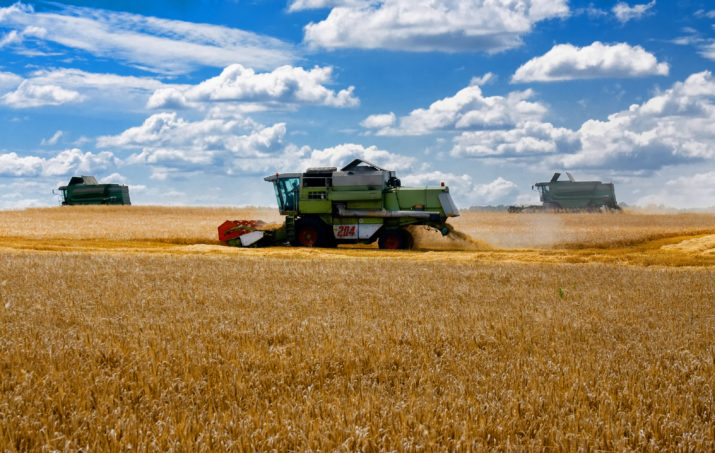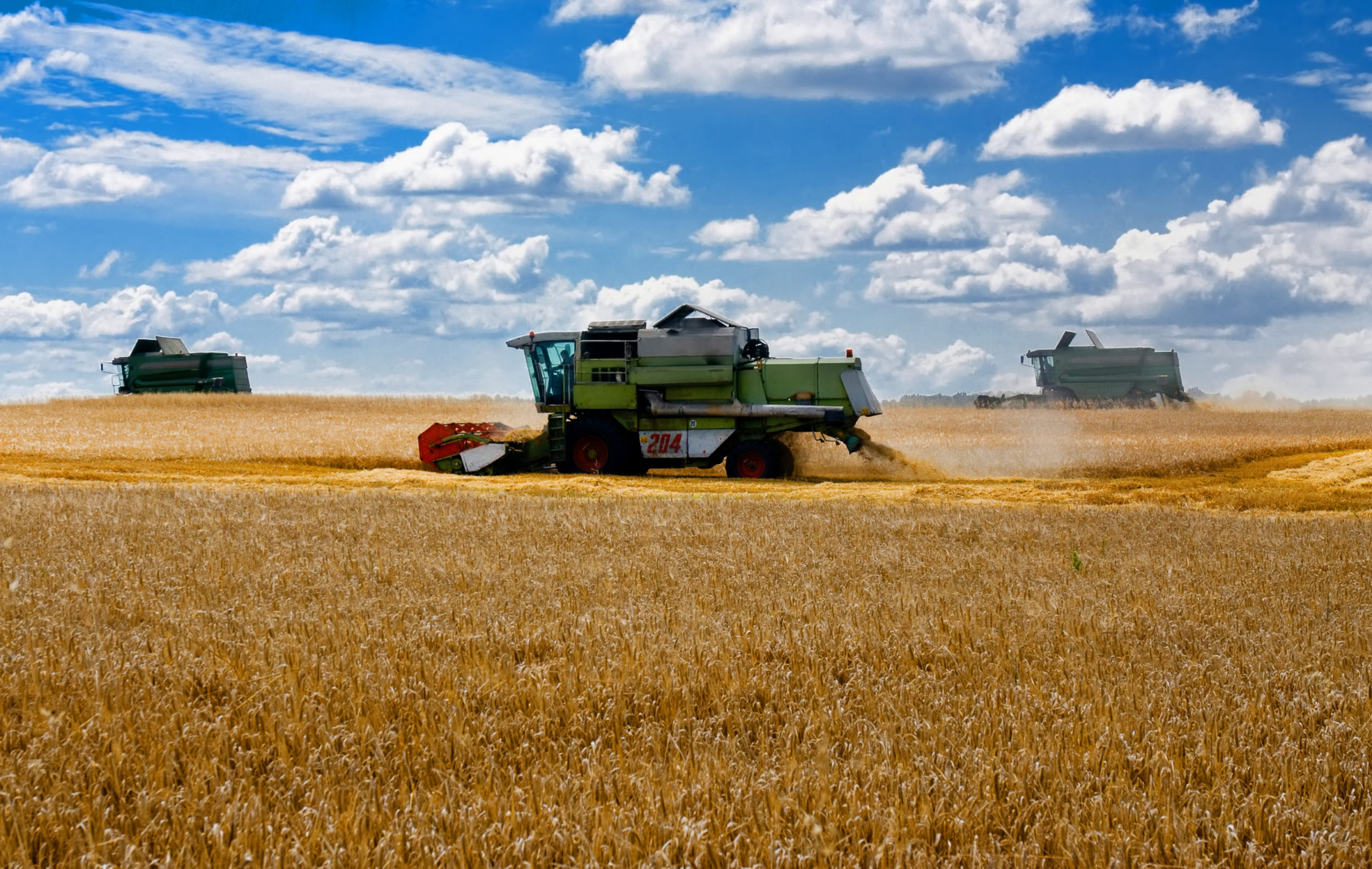
Consequences of the Russian Invasion of Ukraine as an Indicator of MENA Dysfunctional and Unequal Economic and Food System Production

This is part of a series on the Ukraine Crisis.
Russia’s invasion of Ukraine in late February 2022 has already had a severe impact on the global economy, particularly in commodity markets, with the price for oil and gas escalating rapidly. Together, as a share of the world’s exports, Russia and Ukraine supply approximately a third of the wheat, over 70 percent of sunflower oil, 20 percent of corn, 26.6 percent of barley, and 11 percent of oil. Moreover, Russia is one of the world’s most significant providers of fertilizers and related raw materials such as sulfur. Since the invasion, ports on the Black Sea have almost stopped all forms of commercial activity, leading to a historic rise in wheat prices exceeding levels observed during the global food crisis in 2007-2008. Rising inflation and reduced GDP growth are expected on a worldwide scale by most economic institutions. The IMF, for instance, is anticipating this year’s inflation to reach “5.7% in advanced economies and 8.7% in emerging market and developing economies—1.8 and 2.8 percentage points higher than projected in January,” while the global economy is expected to grow by 3.6 percent, down by 0.8 percent from January’s forecast. The World Bank’s latest Commodity Markets Outlook report has stated that the war in Ukraine has dealt a major shock to commodity markets, altering global patterns of trade, production, and consumption in ways that will keep prices at historically high levels through the end of 2024, representing “overall the largest commodity shock we’ve experienced since the 1970s.” The report adds that:
Energy prices are expected to rise more than 50% in 2022 before easing in 2023 and 2024. Non-energy prices, including agriculture and metals, are projected to increase almost 20% in 2022 and will also moderate in the following years. Nevertheless, commodity prices are expected to remain well above the most recent five-year average. In the event of a prolonged war, or additional sanctions on Russia, prices could be even higher and more volatile than currently projected (World Bank 2022).
The Middle East and North Africa (MENA) are not immune to these dynamics. The Russian war in Ukraine has impacted that region negatively in different ways, most particularly through the significant increase in food, oil, and gas prices. Several countries in the region rely primarily on Ukraine and/or Russia for their food imports, and particularly for wheat and cereals. Egypt is the world’s largest wheat importer, with between 70 percent and 80 percent of its supply coming from Russia and Ukraine. The prices for wheat flour and vegetable oil have increased consequently throughout the region. In mid-April, the price of cooking oil was up by 36 percent in Yemen and 39 percent in Syria, while wheat flour prices were up by 47 percent in Lebanon, 15 percent in Libya and 14 percent in Palestine. Even prior to the war in Ukraine, inflation and rising prices were badly hindering access to food for the most vulnerable. Food prices reached an all-time high in February 2022, according to the UN Food and Agriculture Organization’s Food Price Index.
The United Nations’ World Food Programme warned that the war in Ukraine could drive millions of people in the MENA region into food poverty and lead to food insecurity globally. In 2020, the MENA region already accounted for 20 percent of the world’s acutely food insecure people, while it represents only 6 percent of the world’s total population. The MENA region is the largest food-importing region in the world, as around 53 percent of the food consumed there is imported, according to the World Bank. In contrast, several decades ago, a wide number of MENA countries were not as dependent on imported grain and other food items as they are today. Egypt, for instance, had a self-sufficiency ratio (domestic production in relation to consumption) for wheat of approximately 70 percent in 1960, compared to 23 percent in 1980, as imports have increased massively. Similar processes occurred in other countries in the region. This situation raises the question of whether the dominant economic model in the MENA region, adopted over the past few decades based on neoliberalism, is adequate, particularly when considering the issues of agriculture and food sovereignty.
Gradual adoption of neoliberal policies
Over the last decades, in search of short-term profits in the unproductive sectors of their economy, especially in real estate, finance, and trade, the great majority of MENA states have progressively adopted a neoliberal economic model focused on speculative investment. Neoliberalism is a particular version of capitalism that ensures the conditions for capitalist reproduction on a global scale. As part of a ruling class offensive, which lasted through the 1970s and 1980s recessions, it resulted in the restructuring and generation of new and expanded forms of capitalist accumulation. This restructuring progressively spread to the whole MENA region following the crisis in Arab nationalist regimes in the 1970s, which pushed these countries to abandon existing social policies (such as domestic control of industry, support to education, subsidies for basic commodities, and state control of land and other resources). This restructuring also increasingly operated a change in MENA countries’ foreign policies for two key reasons. First, they suffered defeat at the hands of Israel. Second, their state capitalist methods of development began to stagnate. As a result, they opted for a rapprochement with Western countries and their Gulf allies and adopted neoliberalism, rolling back many of the social reforms that had won them popularity among large sectors of society, including workers and peasants.
Under the neoliberal policies of the early 1990s, the privatization of public goods began in the MENA region, mainly in the industrial, real estate, and financial sectors. As they had already done around the world before, international financial institutions (IFIs) started to promote public-private partnerships (PPPs) in the region as a new tool for privatization and for the management of public goods by private entities. States also opened their economies to foreign direct investment, developing the export and service sector, especially tourism. At the same time, states continued to impose taxes on both foreign and domestic companies and guarantee them cheap labor, including through repressive measures.
In the MENA region, states have cut public services, removed subsidies to basic necessities such as food, and privatized state industries, often selling them to businessmen connected to the centers of political power. As a result, all the region’s countries are characterized by extreme class inequality, high rates of poverty, high informality (which strips labor of their protection rights, even if those were limited) and high unemployment, especially among youth. Those with education and valued skills leave for opportunities elsewhere. And, in the case of the Gulf monarchies, the local economy relies on temporary migrant workers who make up the majority of the laboring population and are deprived of political, labor, and civil rights.
The outbreak of popular uprisings in the MENA region in 2011 was, therefore, not simply the result of the 2008 global economic crisis. Certainly, the Great Recession helped trigger them, but the region had deep structural problems compared to the rest of the world. These shortcomings have deepened since then, as the MENA region was declared the most unequal in the world in the World Inequality Report 2022, which stated that the top 10 percent of income share there is equal to 58 percent, compared to 36 percent in Europe.
Effects on the agricultural sector
The agricultural sector was at the center of neoliberal reforms in the region. These policies, which took different paths, resulted in fundamental changes in the use and ownership of land, food production means, and rural life. International monetary institutions, such as the World Bank, have encouraged these neoliberal dynamics through strategies for rural and regional development. The central orientation was to shift agricultural activities toward forms of private ownership connected to international trade. These dynamics similarly pushed for the adoption of a model of intensive industrial export-led agriculture, concentrating on the most profitable crops such as fruits and vegetables at the detriment of others.
The implementation of neoliberal policies enabled the development of agribusiness- dominated markets, with monopolistic structures dominated by large corporations and big landowners. Regional governments also progressively opened their economies to international capital. These policies benefited massively large landowners, who strengthened their positions by purchasing more land and expanding their landholdings, and traders. In contrast, small farmers and large sectors in rural areas suffered from these reforms. Eighty percent of farms occupy only 20 percent of the total agricultural area in the MENA region, indicating that the overwhelming majority of farms are quite small, while 10 percent of farms covers 60 percent of the agricultural area, implying that a small number of large farms cultivate over half the agricultural land area. The MENA region is the second most unequal region for landownership in the world, just after Latin America and the Caribbean. These extreme inequalities in landownership have resulted in severe deterioration in the conditions of living in rural areas, leading to higher levels of poverty that pushed millions of people to leave their lands to find work in urban areas or even abroad. As a consequence of these policies, the share of the agricultural sector dropped massively in these last decades, from 35.2 percent of total employment in 1991 to 18.7 percent in 2019, while the share of the rural population decreased from 68.8 percent in 1960 to 40.8 percent in 2019. Despite great disparity between countries, these numbers reflect a general regional trend resulting from the neoliberal policies that were implemented.
Russia’s war on Ukraine and the ensuing interruption in food and commodity exports from these countries, as well as the rise in prices, are having direct consequences on the MENA region and food insecurity. This is especially the case in countries already struggling with crises and far-reaching food insecurity, such as Syria, Lebanon, and Yemen. Syria imports around two-thirds of its food, and the vast majority of its wheat comes from Russia. Various types of goods related to the production of wheat and flour have witnessed sharp price hikes in markets for vegetable oil, vegetable ghee, yellow corn and soybean meal, and other commodities. The Syrian government enacted various measures to attempt to reduce the economic consequences of the war in Syria, by notably rationing reserves of foodstuffs, including wheat, and fuel. But with poor success. Moreover, the UN’s World Food Programme (WFP) has announced the diminution in the number of goods provided in its monthly emergency food baskets to northwest Syria. The UN agency’s food basket for poverty-stricken families and individuals in northwest Syria is to be decreased from 1,300 to 1,170 kilocalories per person. Beneficiaries still receive the same quantities of vegetable oil, wheat flour, salt, and sugar, but lesser amounts of lentils, chickpeas, rice, and bulgur. This decision is mostly attributed to funding limitations and surging world food prices as a result of the Russian war against Syria and the continuous economic crisis in Syria. The latest measure is the fourth diminution of its kind in two years. In Syria, 13.4 million people are food insecure, according to the WFP.
Lebanon imports more than 90 percent of its grain from Ukraine and Russia and currently hold around a month of grain reserves only. At the end of April 2022, The Bank of Lebanon (BdL) decided to use the funds from the Special Drawing Rights (SDR) allocated by the International Monetary Fund (IMF) in August 2021, worth $1.135 billion, to continue subsidizing wheat, which has also been supported by an additional $15 million approved by the government. These decisions have limited the sharp increase in the price of bread that must be paid in Lebanese Pounds, in the context of high depreciation of the national currency and inflation in world wheat prices because of the Russian-Ukrainian conflict. The opening of credits by the BdL put a temporary halt to threats of shortages brandished by bakers and millers.
Yemen is also threatened by the events in Ukraine as the country imports approximately 40 percent of its wheat from Russia and Ukraine. In Yemen, at the end of 2021, the number of people facing food insecurity had already increased from 15 million to above 16 million in just three months. Moreover, the sharp depreciation of the Yemeni rial has made imported food items, alongside other necessities such as oil, more expensive and has massively decreased households’ purchasing power. Therefore, the production of food in the MENA region has increasingly been a tool to satisfy the production and accumulation of wealth, which only benefits a minority rather than addressing the needs of the local population and the environment.
Food sovereignty vs. food security
In this context, the concept of food sovereignty should be (re)thought as a priority for local populations, in opposition to the concept of “food security” routed in neoliberal thought and advocated by international monetary institutions. According to the food and agriculture organization (FAO), food security represents the material, social, and economic ability for people to access safe and nutritious food in sufficient quantities, in order to meet their needs and food preferences so that they enjoy an active and healthy life. This definition does not put any emphasis on the state’s commitment to food production and for the protection of food producers, but rather on the supply of food through other means, including production, import, or food aid.
In contrast, food sovereignty emphasizes the need to support local production and to guarantee farmers’ rights to decide their own agricultural and food policies. In other words, food sovereignty stresses the issue that food is a right rather than a commodity subject to profitability, emphasizes the right of food producers to dignified living conditions and work environment, and favors local and regional markets over international ones. Food sovereignty also includes an ecological component through the regulation of the relation between farmers and natural resources.
A new agricultural and political economic orientation is absolutely needed as the effects of the war in Ukraine will last, along with severe supply chain disruptions. In March, Kyiv already banned exports of grain and other food products to prevent a domestic humanitarian crisis. This year’s harvest will be reduced significantly as the war is still ongoing. Many of farmers in the eastern part of the country have left their land and the fighting has destroyed farming infrastructure and equipment. The FAO estimates that one‑third of Ukraine’s crops and agricultural land may not be harvested nor cultivated in 2022, resulting in the loss of one fifth of the country’s wheat supply. Future harvests are also in distress because next season’s crop is not likely to be cultivated in the midst of wartime conditions. In parallel, sanctions on Russia, the world’s largest producer of wheat, have further curtail global supplies. Moreover, the MENA region has increasingly been affected by the worsening effects of climate change, such as extreme temperatures and water stress that have impacted the region’s capacity to supply local populations, as well as by environmental degradation and exhaustion of natural resources resulting from a productivist model of development based on extractive industries.
In the MENA countries, the preservation or reinstatement of food and bread subsidies should be a basic and minimal measure in the current context, as the price of food continues to increase and exacerbate food insecurity, especially in the absence of strong social and economic protections systems guaranteeing adequate living conditions for large segments of the local populations. The Russian invasion of Ukraine is not only a source of food shortages and insecurity in the MENA region, but an indicator of structural problems in its production and economic system.
Joseph Daher teaches at the University of Lausanne, Switzerland and is an affiliate professor at the European University Institute in Florence, Italy, where he participates in the “Wartime and Post-Conflict in Syria Project.” He is the author of Syria after the Uprisings, The Political Economy of State Resilience (Pluto Press 2019) and Hezbollah, The Political Economy of Lebanon’s Party of God (Pluto Press 2016).
References
Al-Ghwell, Hafed. 2019. “Where does the MENA region’s food come from?.” MENA Forum, 10 February. https://bit.ly/37JzWpO
Al-Nour, Sakr. 2017. “The challenges of food sovereignty in the Arab region: The case of Egypt.” Arab Forum for Alternatives. https://bit.ly/36O21f6
Belhadj, Ferid. 2022. “Compounded stress: The impact of the war in Ukraine on the Middle East and North Africa” World Bank Blogs, https://bit.ly/3Kh79WH
Bertini, Rafaelle and Zouache, Abdallah. 2020. “Agricultural Land Issues in the Middle East and North Africa,” American Journal of Economics and Sociology, Volume 80, Issue 2, https://doi.org/10.1111/ajes.12391
Chancel, Lucas; Piketty, Thomas; Saez, Emmanuel; Zucman, Gabriel 2021. “World Inequality Report 2022,” World Inequality Lab, https://bit.ly/3EOZSMJ
Gourinchas, Pierre-Olivier. 2022. “War Dims Global Economic Outlook as Inflation Accelerates,” IMF Blog, https://bit.ly/3kd2E59
Hanieh, Adam, 2013, Lineages of Revolt, Issues of Contemporary Capitalism in the Middle East, Chicago: Haymarket Books, 2013
Henderson, Christian 2021. “The rise of Arab Gulf agro-capital: continuity and change in the corporate food regime,” The Journal of Peasant Studies, https://doi.org/10.1080/03066150.2021.1888723
OECD/Food and Agriculture Organization of the United Nations. 2018. “The Middle East and North Africa: Prospects and challenges,” in OECD-FAO Agricultural Outlook 2018-2027, OECD Publishing Paris/Food and Agriculture Organization of the United Nations, Rome
Riachi, Roland. 2019. “Towards food sovereignty and a politicized right to food: A comparative perspective from the Arab world,” ANND’s Arab Watch, https://bit.ly/3EN1M0B
World Bank. 2022. “Commodity Markets Outlook report,” https://bit.ly/39mk3pR
World Food Program. 2022.“War in Ukraine pushes Middle East and North Africa deeper into hunger as food prices reach alarming highs,” https://bit.ly/3kgx9XW
Published on May 18, 2022.




